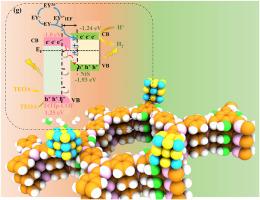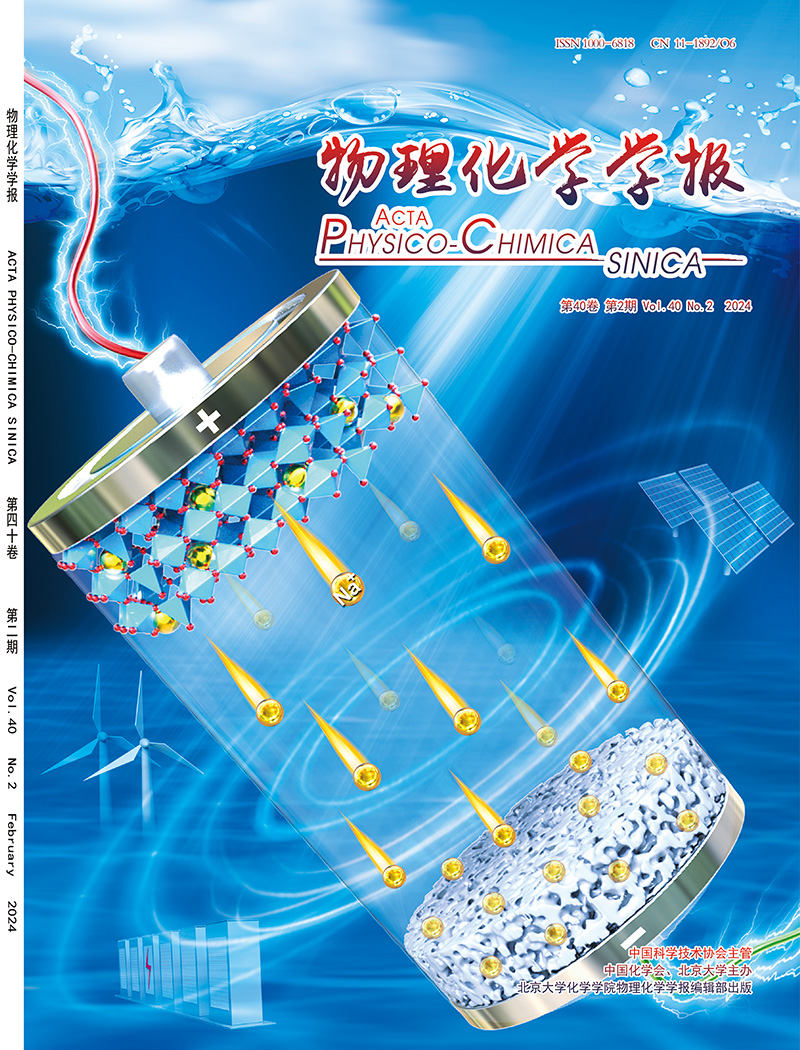Constructing S-scheme heterojunctions by integrating covalent organic frameworks with transition metal sulfides for efficient noble-metal-free photocatalytic hydrogen evolution
IF 13.5
2区 化学
Q1 CHEMISTRY, PHYSICAL
引用次数: 0
Abstract
Two-dimensional covalent organic frameworks (COFs) are considered among the most potential crystalline porous materials for solar-driven hydrogen production. However, it is usually necessary to introduce noble metal cocatalysts to boost the hydrogen evolution capacity of COFs. In this work, a unique S-scheme heterojunction structured TtTfp-COF/NiS composite material was effectively developed by growing metal sulfide on the typical two-dimensional covalent organic framework TtTfp-COF through a simple solvothermal synthesis method. In this structure, linear structure of rod-like NiS is more stable and convenient for further surface modification. It also provides key active sites and promotes efficient electron transfer, significantly enhancing the hydrogen evolution efficiency. The covalent organic framework enhances charge carrier transport efficiency by controlling the spatial organization of precursors and ligands. It is indicated by the experimental findings that a hydrogen evolution rate of 5978 μmol g−1 h−1 can be achieved for the NT-20 sample, which about 11.5 times higher than that of the initial TtTfp-COF (520 μmol g−1 h−1). In addition, the material exhibits a notable quantum efficiency of 1.96 % when exposed to 420 nm illumination. Both experimental results and theoretical analyses have been confirmed to improve the hydrogen evolution rate via photocatalysis and the charge transfer mechanism within the S-scheme heterojunction has been thoroughly elucidated. The design and development of non-precious metal COF-based photocatalysts are provided with new insights in this article, and new ideas for the construction of S-scheme heterojunctions are offered by the synergistic combination of inorganic and organic materials in photocatalysis.

通过将共价有机框架与过渡金属硫化物集成构建s型异质结,实现高效的无贵金属光催化析氢
二维共价有机框架(COFs)被认为是太阳能驱动制氢最有潜力的晶体多孔材料之一。然而,通常需要引入贵金属助催化剂来提高COFs的析氢能力。本文通过简单的溶剂热合成方法,在典型的二维共价有机骨架TtTfp-COF上生长金属硫化物,有效地制备了一种独特的S-scheme异质结结构TtTfp-COF/NiS复合材料。在这种结构中,棒状NiS的线性结构更加稳定,便于进一步的表面改性。它还提供了关键的活性位点,促进了有效的电子转移,显著提高了析氢效率。共价有机骨架通过控制前体和配体的空间组织来提高载流子的输运效率。实验结果表明,NT-20样品的析氢速率为5978 μmol g−1 h−1,是初始TtTfp-COF (520 μmol g−1 h−1)的11.5倍。此外,该材料在420 nm光照下表现出1.96%的量子效率。实验结果和理论分析都证实了光催化可以提高析氢速率,并对s型异质结内的电荷转移机理进行了深入的阐述。本文为非贵金属cof基光催化剂的设计与开发提供了新的见解,并为无机材料与有机材料在光催化中的协同结合为S-scheme异质结的构建提供了新的思路。
本文章由计算机程序翻译,如有差异,请以英文原文为准。
求助全文
约1分钟内获得全文
求助全文

 求助内容:
求助内容: 应助结果提醒方式:
应助结果提醒方式:


